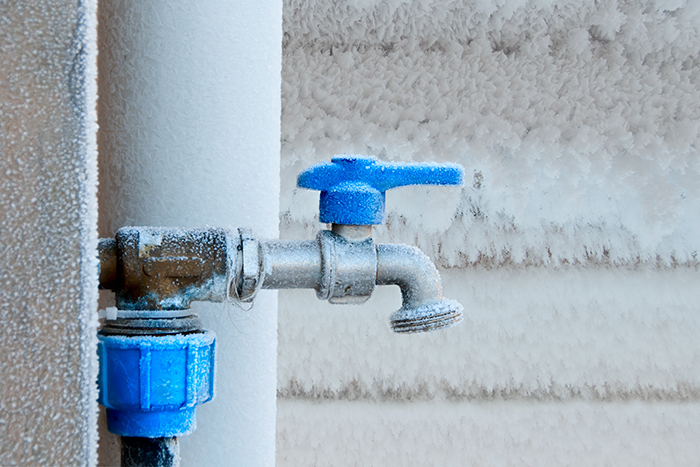How to thaw frozen pipes?
As temperatures drop, the likelihood of frozen water pipes increases. In order to safeguard your property and avoid damage, make sure you know exactly what actions to take if you discover frozen pipes.

At what temperature do pipes freeze in Canada?
Pipes can freeze whenever the temperature around them drops below 0 °C. This can happen during very cold parts of winter, particularly in areas of the home that are not well insulated. To avoid this, plumbing expert Geno Pace recommends setting thermostats to 15 °C and monitoring to ensure room temperatures never fall below 10 °C.
You can also install foam sleeves, insulating tape, or wrap a heating cable around pipes to prevent freezing. However, if you discover your water pipes are frozen, there are important steps to take.
1. Act as quickly as possible
The longer pipes stay frozen and the ice expands, the more potential damage and costly repairs you could face.
2. Ensure you know the location of and are able to access your master water inlet valve
If a pipe breaks, you will need to immediately shut off the water in your house until it is repaired.
3. Locate the frozen pipe
- Start your search with the less-insulated areas of your home, such as closets, cupboards, crawl spaces, attics and garages
- Look for swelling, cracks or frost forming on the surface of the pipes
- Pay special attention to pipes close to exterior walls (especially facing north), outdoor hose bibs, swimming pool supply lines, water sprinkler lines, the area where the municipal water inlet valve enters the home through the foundation wall or the location of your pump if your water is being drawn from a well
4. Open a cold water faucet
Once you have located the frozen pipe, open a cold water faucet to allow fresh water to run through and help melt any ice.
5. Thaw the frozen water pipes
The best way to thaw frozen pipes is to use gentle heat. It is never advisable to use a blow torch or other open flame, as it poses a fire hazard and risks damage to the pipe.
Option 1: Using a hair dryer
Open the faucet and turn on the hair dryer, moving it gently towards the frozen part of the pipe and ensuring that it distributes heat evenly along the area that is frozen.
Option 2: The gradual heating method
If you do not have a hair dryer, or if your leak is located behind a wall, using the gradual heating method may work better for you. You can use a small heater, heat lamp, high wattage bulb or electrical heating tape to gradually radiate heat around the pipe.
Option 3: Call a plumber
If your own efforts do not work, the pipe is completely inaccessible or you can’t find the frozen area, turn off the water inlet valve and call a licensed professional plumber who will know exactly what to do to help.
See also:
How to turn off the water in your home
How much does a heated floor cost?
Everything you need to know about artesian wells
 The Largest Number of Homes for Sale
The Largest Number of Homes for Sale




